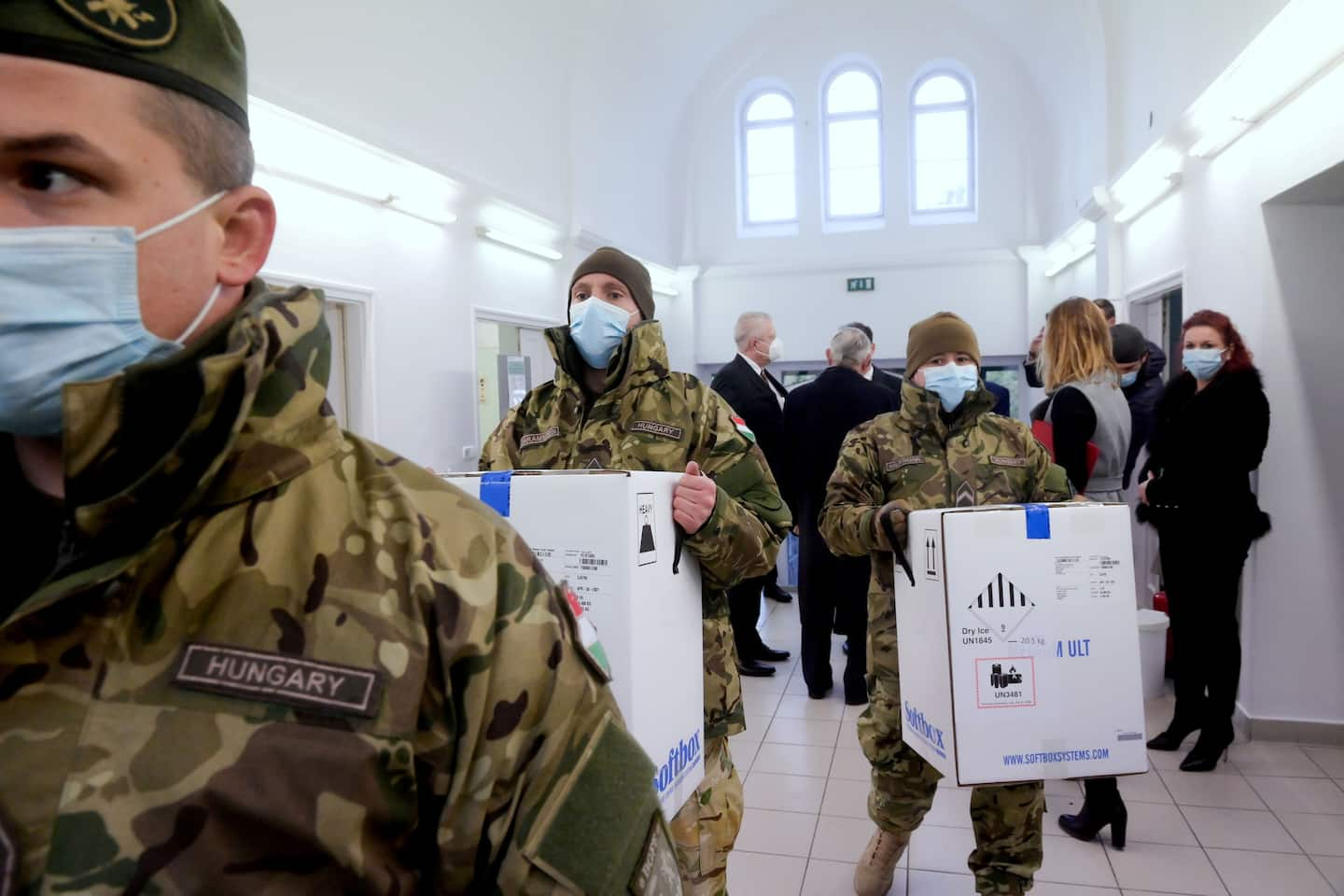Biden’s vaccination success story is about to run into a world of pressure

While it’s been good domestic politics for Biden to prioritize American citizens, it’s also obvious the United States has ordered far more vaccine doses than it will ultimately need. The U.S. government made agreements to purchase:
- 600 million doses of the Pfizer-BioNTech and Moderna two-shot vaccines — enough to vaccinate 300 million people.
- 200 million doses of the Johnson & Johnson single-shot vaccine — enough to vaccinate 200 million people.
- 300 million doses of the yet-to-be-approved two-shot AstraZeneca vaccine, almost a third of the first billion shots the company is manufacturing — enough to vaccinate another 150 million people.
About 267 million U.S. adults are currently eligible. Biden has said any American who wants a vaccine should be able to sign up for one by May 1. And at a certain point in the not-too-distant future, the focus will change from getting every American who wants a shot access to one, to convincing skeptical Americans to get vaccinated. That will be a slower process, so it’s not like suddenly the United States will stop needing vaccines.
How and when Biden chooses to distribute vaccine doses outside the country could impact both the global standing of the United States (especially as China and Russia are providing vaccines to developing countries), and the health and lives of hundreds of millions of people.
A big question will be which countries receive deliveries of doses first from multinational corporations that operate in multiple countries, or sometimes multiple continents. There’s a widening gap between vaccine distribution efforts in wealthy nations, particularly the United States and the United Kingdom, and developing nations. The head of the World Health Organization warned in January of the potential of a “catastrophic moral failure” if young, healthy people in rich nations are vaccinated before older or otherwise at-risk people in poorer countries.
The AstraZeneca vaccine is perhaps the biggest point of contention in the Western world’s vaccination efforts. The United States has 7 million “releaseable” doses and tens of millions more sitting in manufacturing facilities, but it hasn’t been approved for emergency use by the FDA yet.
Europe is already fighting over its own AstraZeneca doses, and the European Union is considering restricting vaccine exports. The E.U. and the U.K. both believe they’re due more doses of the AstraZeneca vaccine, and the E.U. commission has accused AstraZeneca of failing to live up to its commitments. The intricacies of the manufacturing process aren’t making it any easier, especially with England having departed the E.U. But in the United States, where the same vaccine has not yet been approved, tens of millions of doses sit in manufacturing plants, not on their way to people’s arms.
Not that those doses would necessarily go to Europe — but with many more doses purchased than the United States will ultimately require, the Biden administration has a chance to help vaccinate countries that have far fewer doses purchased, or perhaps can’t afford the prices wealthy countries are paying for shots.
“We need maximum flexibility. There is always a chance we will encounter unexpected challenges or there will be a new need for a vaccination effort,” Biden said earlier in March.
But that’s just a start, and it sits against a backdrop of concerns about vaccine diplomacy. Russia and China have been full speed ahead on trying to provide developing countries with their vaccines. That positions both countries to possibly expand their political and economic influences.
Not that it’s all going according to plan; The Washington Post’s Eva Dou and Shibani Mahtani reported Tuesday that a delivery of China’s Sinovac vaccine that arrived in Singapore last month is sitting unused, while the country starts vaccinating citizens with Pfizer-BioNTech and Moderna shots. That’s because China has been accused of a lack of transparency in its clinical trials; countries appear not to trust them, as data from clinical trials last year still hasn’t been released. There are real questions about its effectiveness.
But other countries are moving ahead with it, including Brazil and the Philippines. More than 60 countries have approved at least one of China’s vaccines.
Russia, meanwhile, has been distributing its Sputnik V vaccine. An anchor on Russia’s state television channel called it “the best in the world” in February, part of a large-scale public relations effort the country seems to be putting on. Russia has signed contracts for hundreds of millions of Sputnik V doses, though there are questions about whether those doses can actually be delivered on any kind of realistic timeline.
But Russia and China at least have the appearance of working with the rest of the world, while the United States has been more isolationist. Biden will have to make a choice at some point about when to start releasing more doses to the rest of the world, especially as the number of unvaccinated Americans who actually want to be vaccinated dwindles.






